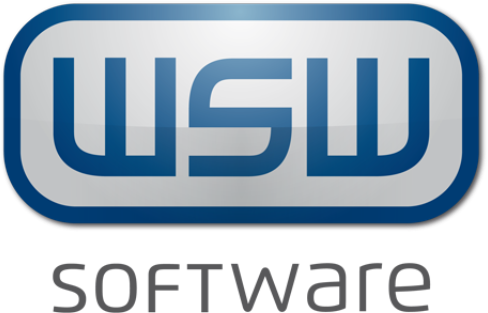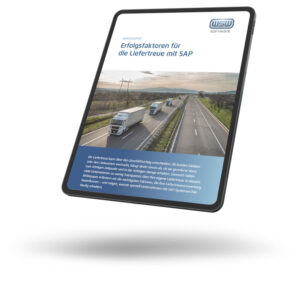Definition: What is an MES?
A Manufacturing Execution System (MES), also known as a production control system in German, is software that is mainly used in manufacturing companies. It supports both the Production planning as well as control. As part of the manufacturing management system, the production control system is directly linked to the operating processes and enables real-time monitoring of production. In addition, the MES collects data on the manufacturing processes, which in turn can be used to detect any errors that may occur in the sequence and to optimize the processes in the plant.
An MES supports production primarily in the following tasks:
- Capacity planning
- Staff scheduling
- Resource planning
- Order scheduling
- Visualization of the order planning
In addition to the planning of certain processes, an MES solution also offers the function of visualizing these processes. For example, the current machine or personnel utilization, throughput times or end dates of orders can be visually prepared and made perfectly recognizable.
As a rule, a production control system is linked to a higher-level ERP system - short for Enterprise Resource Planning. In this system, e.g. SAP, all production orders are typically recorded and created together with the corresponding routings. The production planning information is then passed on to the ME system in order to make optimum use of all operational resources and effectively implement the goals set by the company.
Structure and functionality of an MES
In order to achieve an optimal Capacity planning and be able to operate the ME system, all available employees, workstations and machines must first be stored in the ME system. In addition, the shift system used must also be specified. This data is then used to determine the available capacities for a specific period of time - for example, a calendar month or a calendar week.
Also the Staff scheduling is part of the system. Here, an individual account is created for each employee, in which appointments such as attendances and absences are recorded, as well as vacation and sick days. Furthermore, different user rights can be assigned here so that sensitive information can only be viewed to a limited extent. The assignment of employees to workstations and machines is also a component of personnel resource planning.
In the subsequent Resource planning , processes recorded in the routing are assigned to a specific resource (a workstation or a machine). For this purpose, the MES software stores which resources are allowed to process a certain work step from a technological point of view.
The Order scheduling takes into account the planned finish dates and the capacity requirements of all orders stored in the MES. The concrete mode of operation can differ depending on the software used. As a rule, however, the orders are first scheduled backwards from the planned finish date. The disadvantage of this method is that it often leads to the capacity of a resource (machine, workstation, etc.) being exceeded within a certain period (e.g. operating calendar day). Consequently, either the capacity can be increased or forward scheduling can be applied. The latter shifts the capacity load into the future and thus leads to the planned finish date being exceeded. Order prioritization can be used to determine which orders are to be dealt with in this way. This prioritization fundamentally determines the sequence in which the orders stored in the MES are processed.
If order scheduling has been successfully carried out, a production control system additionally offers the possibility of Visualize job planning. For example, it is possible to map how heavily the available capacities of certain resources are used or which order sequence is to be observed at a workstation.
More info about the low-code manufacturing execution system VALERIS
You are interested in MES and want to know more about our freely configurable low-code solution VALERIS?
What concrete benefits does an MES generate for companies?
Digitizing production with the help of a manufacturing execution system offers companies and production managers various advantages. It ensures:
- an improvement in transparency
- a reduction of the scrap
- Optimized setup and downtimes
- a high delivery reliability
An MES makes it possible to integrate data from production-related systems around the globe into the information flows of a central ERP system in real time. Thus, each individual production step is assigned to a concrete value-added step. The MES software ensures efficient Acquisition of machine and operating data. With its support, production orders can be optimally planned. This planning takes into account all delivery dates and helps to make the best possible use of existing capacities. The digital documentation of orders enables quality assurance to record data completely without paper and independently of programs such as Microsoft Excel or Word.
In addition, shift planning personnel scheduling helps to take into account both the orders to be processed and the workstations to be occupied and the personnel requirements at all times.
In short, the MES uses the data from the ERP to control and monitor the entire product cycle - from material recording and machine utilization to recording the time required, the material consumed and the number of units produced.
How does a production control system support daily work?
An MES maps the entire value chain within production - from the raw materials used to the finished product. Thanks to the transparent overview of all processes in production as well as in the business sphere, manufacturing processes can be optimized in a targeted and continuous manner. For example, manufacturers can seamlessly track the components and production history of a product or retrieve and evaluate production information at the touch of a button.
Based on this data, decisions can be made quickly and in a well-founded manner. At the same time, productivity increases because both personnel and machines and systems are optimally utilized. Employees are also supported by the MES, for example, by being made aware of certain information that needs to be taken into account (e.g. correct recipes or special packaging). In this way, an MES can proactively point out possible sources of error in the production process.
In addition, significantly fewer rejects are produced thanks to the high level of process transparency and optimization. Rework or machine downtimes can also be reduced to a minimum through the use of a production control system.
The introduction of an ME system always involves the analysis of existing processes. Outdated or inefficient processes can thus be identified and optimized with IT support.
ME systems: Implementation and costs
The specific costs for implementing a Manufacturing Execution System depend on various factors. Aspects that must be taken into account are, for example:
- the effort required to adapt the system to individual company needs
- The number of production lines
- the connection to the system landscape of the company
- the number of user licenses required, user training, etc.
How long the introduction of the MES takes also depends on these and other aspects - sometimes the process can take up to a year. It must be taken into account that, in addition to the introduction of the new software, existing processes in the company must often also be converted or adapted. Only in this way can an ME system be introduced successfully and sustainably.
A systematic approach to the selection of an MES solution and the implementation partner is indispensable in order to make a secure investment decision. However, since companies generally do not have an overview of the market or the expertise to evaluate and select appropriate systems, it is advisable to enlist the support of a competent service provider. This service provider can, for example, help in advance with the development of a customized MES concept, introduce an ME system or optimize an existing system.
Summary: The most important at a glance
Manufacturing Execution Systems are software systems used to monitor and automate manufacturing processes. Capacity planning, workforce scheduling, resource planning, order scheduling and process visualization are among the most important functions of an MES. The automated processes can ensure efficient use of resources and maintain desired quality standards.
A flow of data and information supported by an ME system enables companies to initiate measures quickly when required and to minimize response times in the event of unplanned events. Operational optimization potentials are identified and can be implemented with little effort. An MES provides important, up-to-date data at all times and thus ensures a high level of transparency in the manufacturing process. This provides strategic advantages and thus also competitive advantages - because those who can adapt more quickly to changes or new customer requirements prevail over the competition. For the introduction of such software, the support of experts should be called upon.
FAQ
We explain the most important terms related to Manufacturing Execution Systems here:
A Manufacturing Execution System (MES) is a software that is mainly used in manufacturing companies to support production planning. In addition, an MES also offers the function of visualizing processes. In most cases, an MES is linked to an ERP system. In this system, production orders are recorded and created together with the corresponding work plans. This information is then passed back to the MES in order to make optimal use of all operational resources.
An MES offers companies the following advantages, among others: Improved transparency, reduction of scrap, optimized setup and downtime, and high delivery reliability. The MES uses data from the ERP to control and monitor the entire production process.


hamik-1024x682.jpg)
